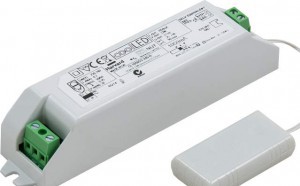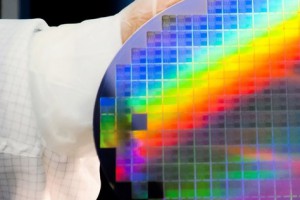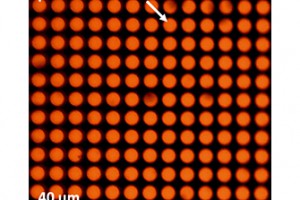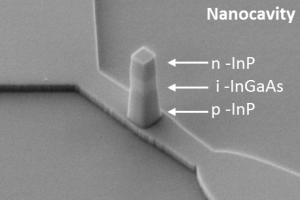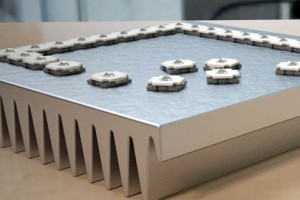Yorkshire LED lighting driver maker Harvard Engineering has added ZigBee wireless control to its range of lighting power supplies. The 33W driver, called CLZ and part of the firm’s CoolLED range, offers dimming down to 1% and includes a 2.4GHz radio – either built-in or remote (pictured). Radio communication allows the driver to tap into Harvard’s ‘EyeNut’ monitoring and management system for ...
LED Lighting
The latest Electronics Weekly product news on LED lighting (light-emitting diodes – a semiconductor light source).
Sheffield firm slashes LED thermal resistance
Finding a way to deposit vertical dielectric barriers has allowed Litecool of Sheffield to make dramatic cut in LED thermal resistance – from 1.25 to 0.5°C/W is one case – see diagram. Dielectric layers are essential to separate electrical conductors but, with a few notable exceptions like diamond, introduce thermal barriers. Spreading heat before it reaches insulating layers with a ...
Ikea invests in French GaN-based LED lighting firm
Ikea’s venture capital arm has invested in a French firm developing and manufacturing 3D LEDs. Grenoble-based Aledia is developing LEDs for lighting based on a gallium-nitride-on-silicon technology. Ikea believes there is this low-price LED lighting technology for residential use has the potential of faster implementation of the LED technology, leading to savings for customers. Christian Ehrenborg, managing director of Ikea GreenTech ...
60,000hour LM-80 life for Lumileds mid-power lighting LED
Lumileds announced LM-80 test results for its 3535L mid-power lighting LED. 10,000 hours of tests at 55, 85 and 105˚C showed the device exceeds lumen maintenance requirements for both Energy Star and qualification by the DesignLights Consortium (DLC). Projections based on TM-21-11 predict at least 90% of initial light output (L90) will be maintained for a minimum of 60,000 hours ...
Imec demoes full-colour OLEDs
Imec and Fujifilm have demonstrated full-colour OLEDs by using their jointly-developed photoresist technology for organic semiconductors, a technology that enables submicron patterning. This paves the way to producing high-resolution and large organic electroluminescent (EL) displays and establishing cost-competitive manufacturing methods. Organic EL displays can be made thin and flexible with excellent response time and contrast ratio. Products require organic EL displays of high ...
Micro LED arrays display achieves 1,000,000 cd/m2
French lab CEA-Leti has demonstrated a way to make high-density micro LED arrays for wearable vision. The LEDs are GaN/InGaN – the technology behind white LEDs – with a pitch of 10µm or less. “Currently available microdisplays for both head-mounted and compact head-up applications suffer from fundamental technology limitations that prevent the design of very low-weight, compact and low-energy-use products,” ...
Prize-winning photograph of an LED nano-structure
The remarkable photograph of an LED nano-structure was taken by a PhD student at the Eindhoven University of Technology (TU/e). It was taken with a scanning electron microscope (SEM) and was the winning photograph in a competition held by Oxford Instruments Plasma Technology. The winning photograph was submitted by PhD Candidate Victor Dolores-Calzadilla from the Photonic Integration Group at TU/e. Dolores-Calzadilla ...
Osram takes on CoBs in MR16 lamps
Osram is taking on chip-on-board LEDs (CoBs) in MR16 lighting applications with a 7x7mm surface-mount (SMD) array LED named Duris S 10. “In view of the surface-mounted design of the LED, a pc board has to be incorporated in the luminaire. This opens up numerous design options such as integrating thermal fuses, connectors or driver components on the LED board,” ...
LEDs displace ceramic metal halide for retail lighting
Luminus aims to replace ceramic metal halide lamps with its latest range of CoB LEDs. Called the XH series, light emitting diameters of 6, 9, 11, and 14mm are available. 9 and 11 mm LEDs care intended to replace 39W and 70W metal halide sources respectively. The 3,000K 80CRI 6mm device generates 1,500 lm, and when combined with a 85mm ...
Solder-free pick-and-place package for LED lighting
Aiming at lighting manufacturers that don’t want to buy a soldering line, Sheffield-based Litecool has developed a self-adhesive self-connecting LED package that can be pick-and-placed direct onto heatsinks – and it accepts standard lenses from Carclo. No PCB, metal-cored or otherwise, is required. The key to self-adhesive packaging for power devices is to spread heat to an area much large ...
 Electronics Weekly Electronics Design & Components Tech News
Electronics Weekly Electronics Design & Components Tech News
